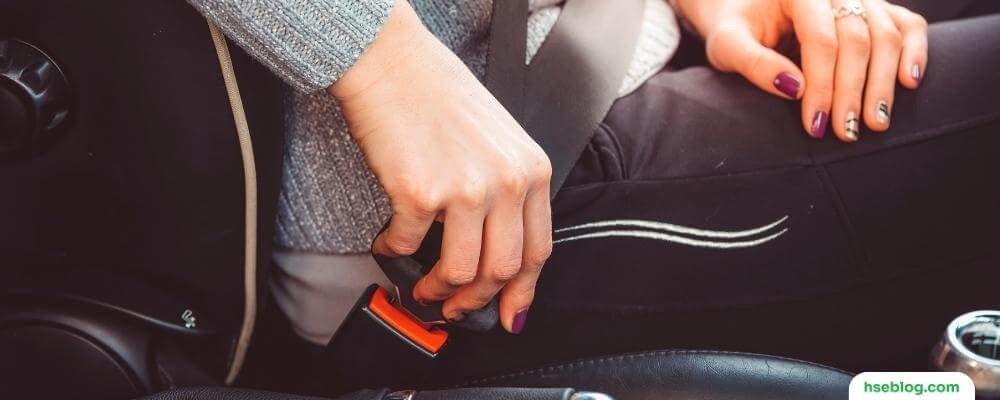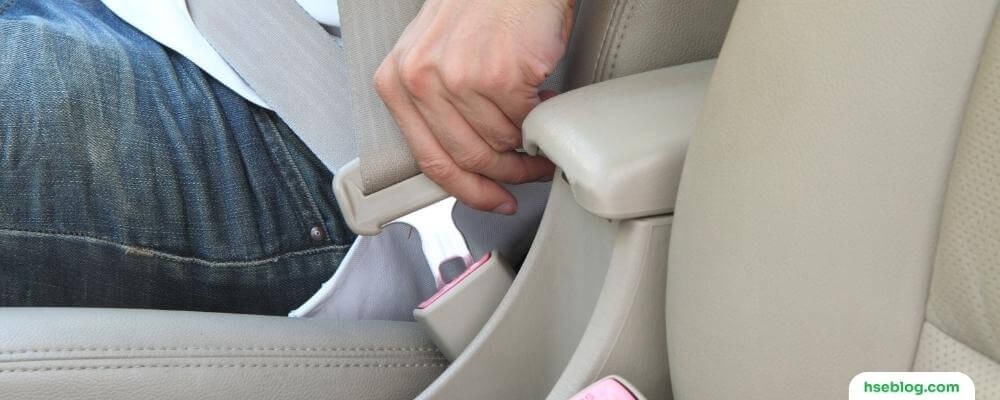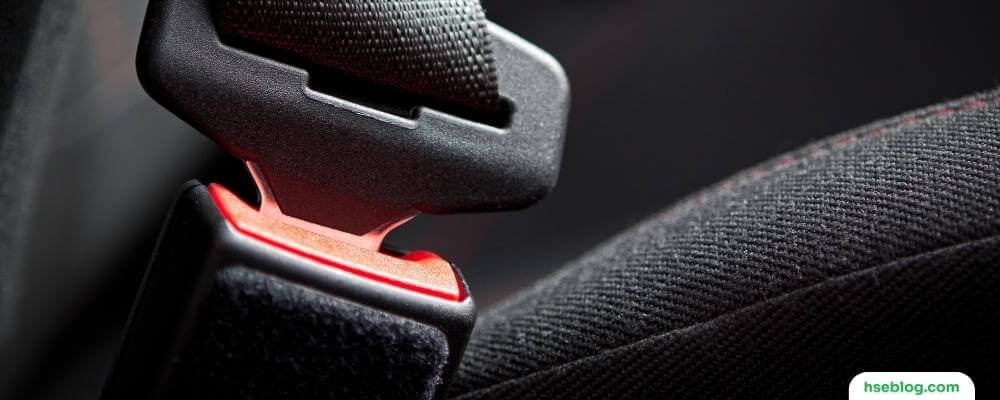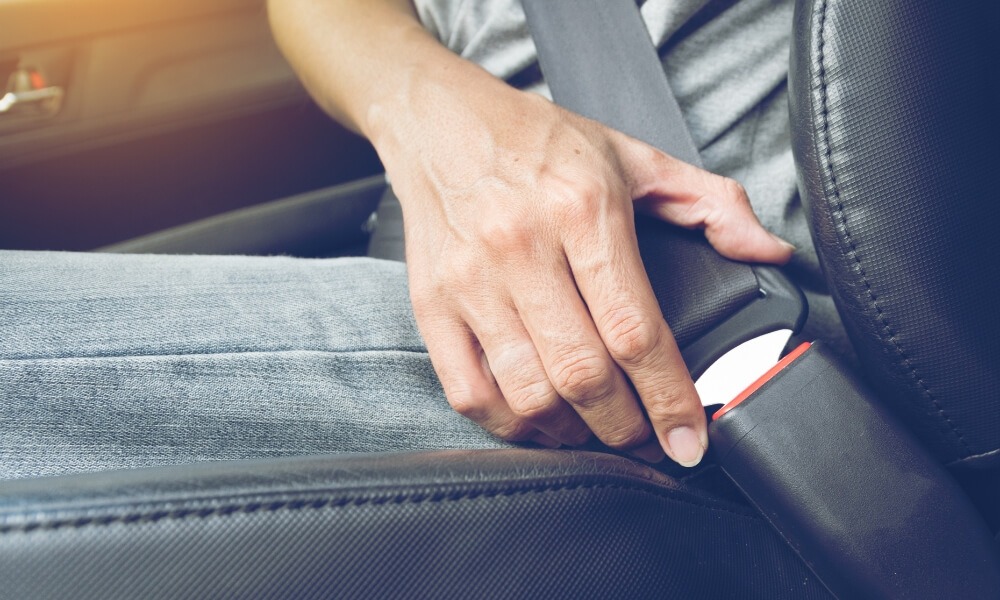The car has become an integral part of our daily lives in our fast-paced world. We buckle up and set off, often without a second thought. But how often do we stop considering the very act of buckling up and its lifesaving importance? Welcome to our blog, where we delve into the critical subject of wearing a seat belt – an act that takes a few seconds yet can potentially make a difference between life and death.
In this blog, we’ll explore the science behind seat belts, debunk common myths, and underscore the significance of seat belt usage for different age groups, including children. From the underlying mechanics that make seat belts effective to the laws and regulations that mandate their use, we aim to provide a comprehensive look at why seat belts are more than just a part of your car’s interior. They are, without a doubt, its most important safety feature.
So whether you’re a driver or a passenger, a seasoned road user, or a new license holder, this blog is for you. Join us as we navigate the importance of wearing a seat belt and why it should be an indispensable part of every journey you undertake. Remember, when it comes to road safety, every decision counts. Stay safe, and stay buckled up.
Importance of Wearing a Seat Belt
Wearing a seat belt is of utmost importance for several reasons. Here are some key reasons why wearing a seat belt is crucial:
1. Diminish the Possibility of Death
The principal advantage of wearing a seatbelt is its ability to lessen the likelihood of death during a car crash by as much as 50%. Research has revealed that the use of a seatbelt can actually lower the likelihood of injury and fatality by over half. This statistic alone exemplifies the critical importance of consistently using your seatbelt when operating a vehicle.
2. Ward Off Physical Harm
In addition to diminishing fatality risks during accidents, seatbelts also play a crucial role in safeguarding against injuries to your head, body, and limbs during a collision. They keep you firmly in place, protecting you against blunt force trauma that could result in serious internal injuries or organ damage. Moreover, a seatbelt can substantially mitigate the effects of whiplash and other neck-related injuries, enabling you to survive a car crash with minimal harm.
3. Evade Legal Consequences
Many jurisdictions impose substantial penalties for not utilizing your seatbelt while driving. This could lead to hefty fines or even imprisonment in some cases. Hence, if you wish to sidestep such legal consequences, the wisest strategy is to fasten your seatbelt before driving.
4. Be a Role Model
The act of wearing a seatbelt is crucial in setting a positive example for children and other passengers in your car. By showing the significance of safety and correct seatbelt usage, you promote good practices among those around you. These practices could potentially be lifesaving habits for them in the future.
5. Preserve Vehicle Control
Wearing a seatbelt during sudden braking or abrupt swerving can help the driver maintain vehicle control. In an accident, unbuckled passengers could be thrown around, causing distraction or further loss of control. Wearing a seatbelt ensures you stay in your seat and can manage the vehicle in a crisis.

6. Cushion the Impact
Seatbelts are designed to distribute the force of a collision across the body’s strongest parts, like the hips and shoulders. By doing so, they minimize the concentration of impact on any single part of the body, reducing the severity of potential injuries.
7. Align with Airbag Functionality
Airbags are designed to work in conjunction with seatbelts, not as a replacement. Without a seatbelt, passengers could be thrown toward an inflating airbag, which deploys at high speed and can cause injury. Wearing a seatbelt keeps passengers in the correct position to benefit safely from airbag deployment.
8. Economic Implications
Accidents involving unbuckled passengers often result in more severe injuries, leading to higher medical costs, longer hospital stays, and greater loss of productivity. By wearing a seatbelt, you can contribute to reducing these societal costs.
9. Encourage a Culture of Safety
Wearing a seatbelt promotes a culture of safety, which can extend beyond just driving. It encourages mindfulness about personal safety and the safety of others, potentially influencing decisions about drinking and driving, texting and driving, or other risky behaviors.
10. It’s a Simple Act with Significant Consequences
Finally, wearing a seatbelt is an easy task—it takes just a few seconds to buckle up, yet it can make a significant difference in the event of a collision. Compared to its potential life-saving impact, the act’s simplicity should make it a no-brainer.
Statistics on Seat Belt Use and Car Accidents
Globally, it’s estimated that seat belts are used by the majority of vehicle occupants. For instance, regarding my knowledge cutoff in September 2021, the U.S. National Highway Traffic Safety Administration (NHTSA) reported that seat belt usage was about 90.3% in 2020. Despite this high usage rate, millions of drivers and passengers still neglect to buckle up, putting their lives at risk.
Correlation Between Seat Belt Use and Survival Rates in Car Accidents
The correlation between seat belt use and survival rates in car accidents is strong and well-documented. NHTSA data suggests that among passenger vehicle occupants killed in 2019, 47% were not wearing seat belts. In 2017, it was estimated that seat belts saved nearly 15,000 lives. The Centers for Disease Control and Prevention (CDC) states that seat belts reduce serious crash-related injuries and deaths by about half.
Case Studies Showing the Impact of Seat Belt Usage on Accidents
Numerous case studies demonstrate the impact of seat belt usage in accidents. In one such study, the University of Tokyo found that the fatality rate for front-seat occupants was reduced by 28% when seat belts were used. Another study by the University of North Carolina Highway Safety Research Center found unrestrained drivers were over four times as likely to die in crashes as restrained drivers. The evidence is clear: seat belt usage significantly reduces the risk of death and serious injury in automobile accidents.
The Science Behind Seat Belts
Seat belts work on the principles of physics and mechanical engineering. When a vehicle is in motion, the passengers inside also move at the same speed. If the vehicle suddenly stops, like in the event of a collision, the people inside would still continue moving due to inertia, potentially leading to severe injuries or even death.
Seat belts serve to counteract this inertia. They do so by distributing the force of the sudden deceleration over larger and stronger parts of the person’s body, such as the chest, pelvis, and shoulders. This force distribution helps reduce the overall impact on any part of the body.
The seat belt system comprises various components, including the webbing, retractor, and buckle. The webbing is made of high-strength materials designed to withstand significant forces. The retractor mechanism rolls up the excess belt webbing and locks in place when it detects sudden movement or a collision, thus preventing the passenger from being thrown forward. The buckle secures the seat belt in place.

Different Types of Seat Belts and Their Specific Uses
There are several different types of seat belts, each designed for specific uses and levels of protection:
- Lap Belts: These are the simplest form of seat belts and go over the waist. While better than no protection, they don’t offer the same level of safety as other types because they can lead to serious injuries in a high-speed collision.
- Shoulder Belts: These belts go across the chest and help to prevent the upper body from lurching forward in a crash. However, they aren’t commonly used alone anymore due to the risk of injury they pose without a lap belt.
- Three-Point Belts: The most common type found in modern vehicles, three-point belts combine a lap belt and a shoulder belt, providing higher protection. They secure both the upper and lower body, significantly reducing the risk of injury in a collision.
- Five-Point Belts are typically used in child safety seats and racing cars. They include two belts over the shoulders, two for the hips, and one between the legs. These belts spread the forces of a crash over a wide area and provide excellent restraint.
- Inflatable Seat Belts: A relatively new innovation, these are designed to reduce the risk of injury caused by the seat belt in a collision. In a crash, the belt inflates, distributing the impact force over a larger body area.
Each type of seat belt has been engineered with a specific purpose in mind, and their effective use plays a significant role in reducing the risk of serious injury or fatality in the event of a vehicle accident.
Common Misconceptions about Seat Belts
Several myths and misconceptions about seat belts can deter their use. Here are a few common ones:
- “Seat belts are uncomfortable and restrictive.” While it might take a little time to get used to wearing a seat belt, modern designs prioritize comfort alongside safety. You can adjust the seat belt to fit you better, which can help with comfort.
- “I don’t need a seat belt for short trips or when driving slowly.” Accidents can occur at any time, even on short trips in the neighborhood or at low speeds. In fact, most car accidents occur within 10 miles of home.
- “If my car has airbags, I don’t need a seat belt.” Airbags are designed to work in conjunction with seat belts, not as a replacement. Without a seat belt, you could be thrown into a rapidly inflating airbag, which can cause serious injury.
- “I could get trapped in a fire or underwater if I wear a seat belt.” Incidents involving fire or water make up a tiny fraction of car accidents. Moreover, a seat belt can keep you from being knocked unconscious, improving your chances of escaping.
Clarifying the True Risks and Benefits of Seat Belt Use
Despite these misconceptions, the benefits of using seat belts far outweigh any perceived risks. The primary benefit of seat belt use is the significant reduction in the risk of death and serious injuries in the event of a crash. As per the Centers for Disease Control and Prevention (CDC), seat belts reduce the risk of death by 45% and cut the risk of serious injury by 50%.
Seat belts prevent drivers and passengers from being ejected during a crash. People not wearing seat belts are 30 times more likely to be ejected from a vehicle during a crash. More than three out of four people ejected during a fatal crash die from injuries.
It’s also important to remember that wearing a seat belt protects you and the other passengers in the vehicle. In a crash, unbuckled passengers can become projectiles that may injure or kill others in the car.

The Role of Seat Belts in Child Safety
Child safety in vehicles is paramount, and seat belts are crucial. However, standard seat belts are designed for adults and may not adequately protect children due to their smaller size and different proportions. That’s where child-specific restraints like car seats and booster seats come into play.
Infants and toddlers should be placed in rear-facing car seats, as these provide the best support for their head, neck, and spine during a crash. Once outgrow these, they should switch to a forward-facing car seat with a harness.
As children grow further, they should transition to a booster seat. These seats elevate the child so that the belt fits properly over the stronger parts of their body, namely the chest and the middle of the collarbone and hips, rather than the neck and abdomen.
These child-specific restraints are crucial in protecting children from serious injury in the event of a crash, as they distribute the impact forces more evenly across the body and away from the delicate areas.
Laws and Regulations Regarding Child Safety in Vehicles
Laws and regulations regarding child safety in vehicles vary by country and even by states or provinces within countries. However, they generally mandate the use of appropriate child restraint systems based on the child’s age, weight, and height.
In the United States, for example, all states require child safety seats for infants and children in some capacity. The American Academy of Pediatrics recommends that children remain in their rear-facing car seats as long as possible until they reach the highest weight or height allowed by their seat. Then they should use a forward-facing car seat and eventually transition to a booster seat until they are tall enough (usually 4 feet 9 inches) to properly fit an adult seat belt.
It’s also important to note that many areas have laws requiring children to ride in the back seat, which is typically the safest location in the car for children.
It is highly recommended that parents and caregivers follow these laws and guidelines and ensure that child restraints are correctly installed and used for every journey, no matter how short. Regularly checking that the child has not outgrown their current seat is crucial to ensure maximum protection.
Conclusion
As we conclude our journey exploring the lifesaving importance of seat belts, we hope this information has underscored the absolute necessity of this simple yet vital safety device. The science is clear and unequivocal: seat belts save lives. According to the National Highway Traffic Safety Administration, they are the single most effective traffic safety device for preventing death and injury.
We’ve debunked common myths, highlighted seat belts’ critical role in child safety, and laid out the stark statistics that emphasize their importance. Yet, the most crucial takeaway is the simplest: always buckle up, regardless of how far or fast you’re traveling.
Remember, wearing a seat belt isn’t just about obeying the law – it’s about protecting your life and the lives of those in the car with you. Every trip, every time, the choice should be automatic. Buckle up before you drive off, and ensure all your passengers do the same. In the grand scheme of things, the few seconds it takes to fasten your seat belt is a negligible price to pay for your safety and that of your loved ones. As we’ve seen, the consequences of choosing not to can be devastating and irreversible.
Ultimately, each of us has a role to play in making our roads safer. Let’s commit to making the responsible choice, not just for ourselves but our families, friends, and communities. Seat belts save lives – let’s allow them to do their job. Stay safe, everyone, and remember, your life is worth the click!

